Zi Yin
The BabyView dataset: High-resolution egocentric videos of infants' and young children's everyday experiences
Jun 14, 2024Abstract:Human children far exceed modern machine learning algorithms in their sample efficiency, achieving high performance in key domains with much less data than current models. This ''data gap'' is a key challenge both for building intelligent artificial systems and for understanding human development. Egocentric video capturing children's experience -- their ''training data'' -- is a key ingredient for comparison of humans and models and for the development of algorithmic innovations to bridge this gap. Yet there are few such datasets available, and extant data are low-resolution, have limited metadata, and importantly, represent only a small set of children's experiences. Here, we provide the first release of the largest developmental egocentric video dataset to date -- the BabyView dataset -- recorded using a high-resolution camera with a large vertical field-of-view and gyroscope/accelerometer data. This 493 hour dataset includes egocentric videos from children spanning 6 months - 5 years of age in both longitudinal, at-home contexts and in a preschool environment. We provide gold-standard annotations for the evaluation of speech transcription, speaker diarization, and human pose estimation, and evaluate models in each of these domains. We train self-supervised language and vision models and evaluate their transfer to out-of-distribution tasks including syntactic structure learning, object recognition, depth estimation, and image segmentation. Although performance in each scales with dataset size, overall performance is relatively lower than when models are trained on curated datasets, especially in the visual domain. Our dataset stands as an open challenge for robust, humanlike AI systems: how can such systems achieve human-levels of success on the same scale and distribution of training data as humans?
Alignment is not sufficient to prevent large language models from generating harmful information: A psychoanalytic perspective
Nov 14, 2023Abstract:Large Language Models (LLMs) are central to a multitude of applications but struggle with significant risks, notably in generating harmful content and biases. Drawing an analogy to the human psyche's conflict between evolutionary survival instincts and societal norm adherence elucidated in Freud's psychoanalysis theory, we argue that LLMs suffer a similar fundamental conflict, arising between their inherent desire for syntactic and semantic continuity, established during the pre-training phase, and the post-training alignment with human values. This conflict renders LLMs vulnerable to adversarial attacks, wherein intensifying the models' desire for continuity can circumvent alignment efforts, resulting in the generation of harmful information. Through a series of experiments, we first validated the existence of the desire for continuity in LLMs, and further devised a straightforward yet powerful technique, such as incomplete sentences, negative priming, and cognitive dissonance scenarios, to demonstrate that even advanced LLMs struggle to prevent the generation of harmful information. In summary, our study uncovers the root of LLMs' vulnerabilities to adversarial attacks, hereby questioning the efficacy of solely relying on sophisticated alignment methods, and further advocates for a new training idea that integrates modal concepts alongside traditional amodal concepts, aiming to endow LLMs with a more nuanced understanding of real-world contexts and ethical considerations.
Emotional Intelligence of Large Language Models
Jul 28, 2023Abstract:Large Language Models (LLMs) have demonstrated remarkable abilities across numerous disciplines, primarily assessed through tasks in language generation, knowledge utilization, and complex reasoning. However, their alignment with human emotions and values, which is critical for real-world applications, has not been systematically evaluated. Here, we assessed LLMs' Emotional Intelligence (EI), encompassing emotion recognition, interpretation, and understanding, which is necessary for effective communication and social interactions. Specifically, we first developed a novel psychometric assessment focusing on Emotion Understanding (EU), a core component of EI, suitable for both humans and LLMs. This test requires evaluating complex emotions (e.g., surprised, joyful, puzzled, proud) in realistic scenarios (e.g., despite feeling underperformed, John surprisingly achieved a top score). With a reference frame constructed from over 500 adults, we tested a variety of mainstream LLMs. Most achieved above-average EQ scores, with GPT-4 exceeding 89% of human participants with an EQ of 117. Interestingly, a multivariate pattern analysis revealed that some LLMs apparently did not reply on the human-like mechanism to achieve human-level performance, as their representational patterns were qualitatively distinct from humans. In addition, we discussed the impact of factors such as model size, training method, and architecture on LLMs' EQ. In summary, our study presents one of the first psychometric evaluations of the human-like characteristics of LLMs, which may shed light on the future development of LLMs aiming for both high intellectual and emotional intelligence. Project website: https://emotional-intelligence.github.io/
End-to-End Face Parsing via Interlinked Convolutional Neural Networks
Feb 12, 2020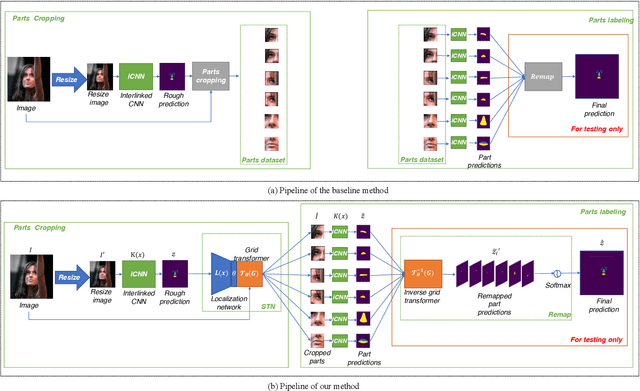

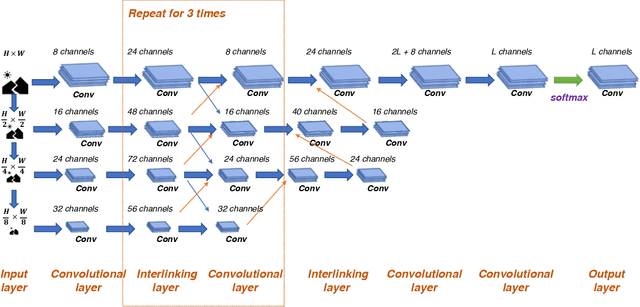

Abstract:Face parsing is an important computer vision task that requires accurate pixel segmentation of facial parts (such as eyes, nose, mouth, etc.), providing a basis for further face analysis, modification, and other applications. In this paper, we introduce a simple, end-to-end face parsing framework: STN-aided iCNN (STN-iCNN), which extends interlinked Convolutional Neural Network (iCNN) by adding a Spatial Transformer Network (STN) between the two isolated stages. The STN-iCNN uses the STN to provide a trainable connection to the original two-stage iCNN pipe-line, making end-to-end joint training possible. Moreover, as a by-product, STN also provides more precise cropped parts than the original cropper. Due to the two advantages, our approach significantly improves the accuracy of the original model.
The Global Anchor Method for Quantifying Linguistic Shifts and Domain Adaptation
Dec 12, 2018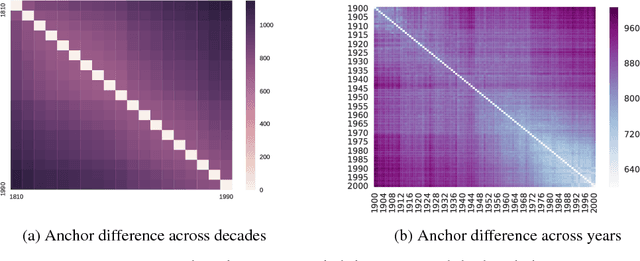

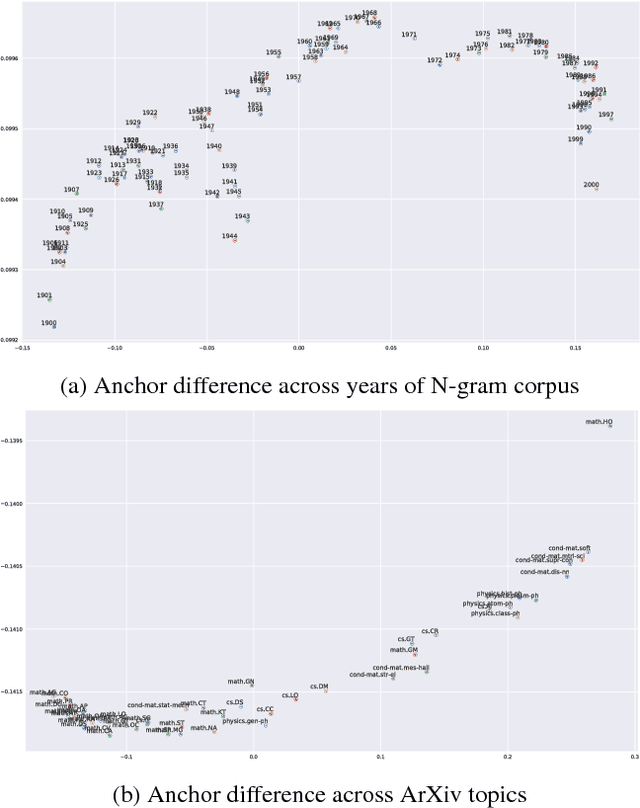
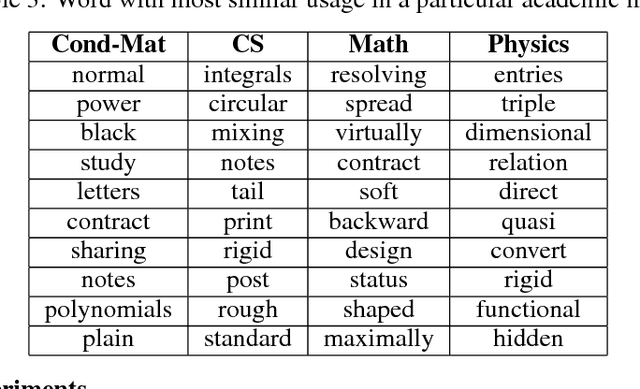
Abstract:Language is dynamic, constantly evolving and adapting with respect to time, domain or topic. The adaptability of language is an active research area, where researchers discover social, cultural and domain-specific changes in language using distributional tools such as word embeddings. In this paper, we introduce the global anchor method for detecting corpus-level language shifts. We show both theoretically and empirically that the global anchor method is equivalent to the alignment method, a widely-used method for comparing word embeddings, in terms of detecting corpus-level language shifts. Despite their equivalence in terms of detection abilities, we demonstrate that the global anchor method is superior in terms of applicability as it can compare embeddings of different dimensionalities. Furthermore, the global anchor method has implementation and parallelization advantages. We show that the global anchor method reveals fine structures in the evolution of language and domain adaptation. When combined with the graph Laplacian technique, the global anchor method recovers the evolution trajectory and domain clustering of disparate text corpora.
On the Dimensionality of Word Embedding
Dec 11, 2018



Abstract:In this paper, we provide a theoretical understanding of word embedding and its dimensionality. Motivated by the unitary-invariance of word embedding, we propose the Pairwise Inner Product (PIP) loss, a novel metric on the dissimilarity between word embeddings. Using techniques from matrix perturbation theory, we reveal a fundamental bias-variance trade-off in dimensionality selection for word embeddings. This bias-variance trade-off sheds light on many empirical observations which were previously unexplained, for example the existence of an optimal dimensionality. Moreover, new insights and discoveries, like when and how word embeddings are robust to over-fitting, are revealed. By optimizing over the bias-variance trade-off of the PIP loss, we can explicitly answer the open question of dimensionality selection for word embedding.
Understand Functionality and Dimensionality of Vector Embeddings: the Distributional Hypothesis, the Pairwise Inner Product Loss and Its Bias-Variance Trade-off
May 21, 2018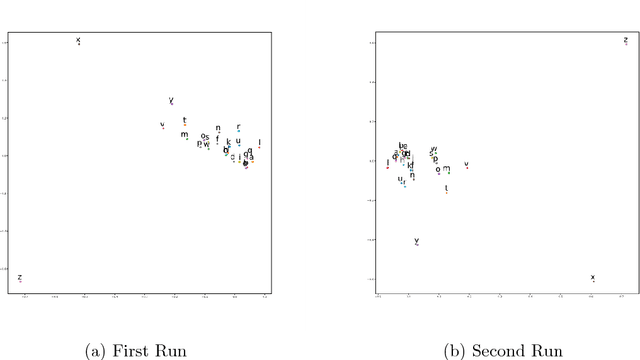
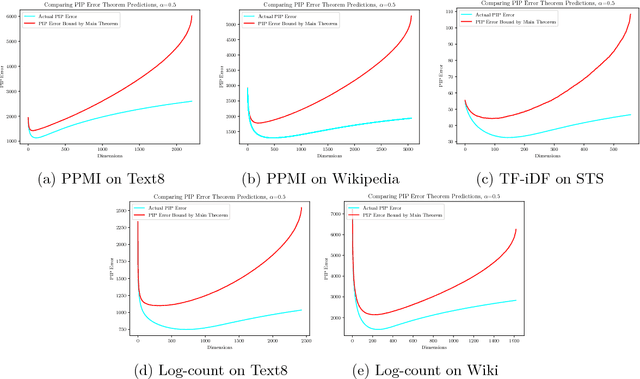


Abstract:Vector embedding is a foundational building block of many deep learning models, especially in natural language processing. In this paper, we present a theoretical framework for understanding the effect of dimensionality on vector embeddings. We observe that the distributional hypothesis, a governing principle of statistical semantics, requires a natural unitary-invariance for vector embeddings. Motivated by the unitary-invariance observation, we propose the Pairwise Inner Product (PIP) loss, a unitary-invariant metric on the similarity between two embeddings. We demonstrate that the PIP loss captures the difference in functionality between embeddings, and that the PIP loss is tightly connect with two basic properties of vector embeddings, namely similarity and compositionality. By formulating the embedding training process as matrix factorization with noise, we reveal a fundamental bias-variance trade-off between the signal spectrum and noise power in the dimensionality selection process. This bias-variance trade-off sheds light on many empirical observations which have not been thoroughly explained, for example the existence of an optimal dimensionality. Moreover, we discover two new results about vector embeddings, namely their robustness against over-parametrization and their forward stability. The bias-variance trade-off of the PIP loss explicitly answers the fundamental open problem of dimensionality selection for vector embeddings.
DeepProbe: Information Directed Sequence Understanding and Chatbot Design via Recurrent Neural Networks
Mar 01, 2018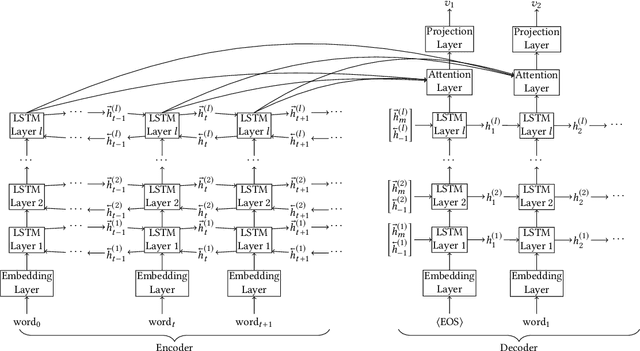
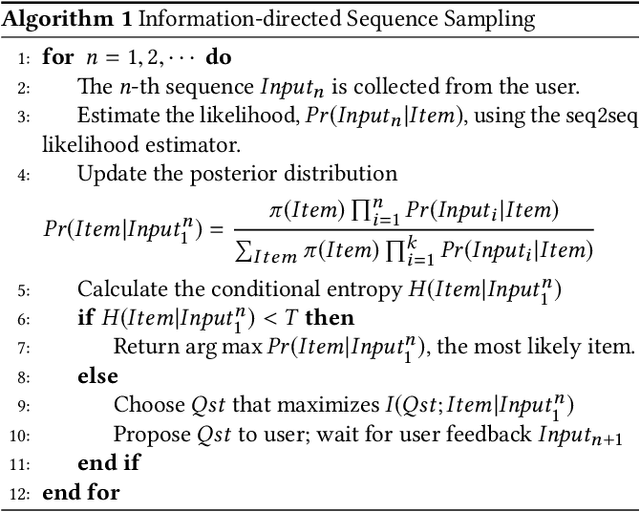
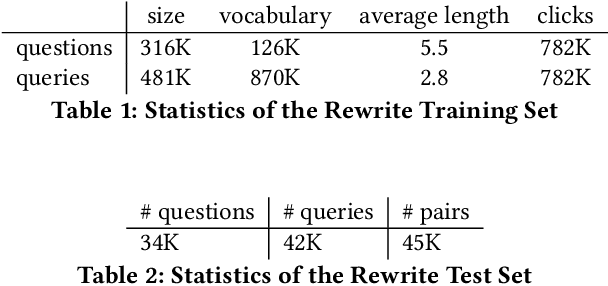
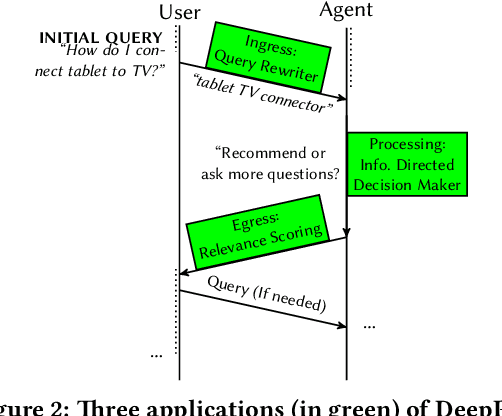
Abstract:Information extraction and user intention identification are central topics in modern query understanding and recommendation systems. In this paper, we propose DeepProbe, a generic information-directed interaction framework which is built around an attention-based sequence to sequence (seq2seq) recurrent neural network. DeepProbe can rephrase, evaluate, and even actively ask questions, leveraging the generative ability and likelihood estimation made possible by seq2seq models. DeepProbe makes decisions based on a derived uncertainty (entropy) measure conditioned on user inputs, possibly with multiple rounds of interactions. Three applications, namely a rewritter, a relevance scorer and a chatbot for ad recommendation, were built around DeepProbe, with the first two serving as precursory building blocks for the third. We first use the seq2seq model in DeepProbe to rewrite a user query into one of standard query form, which is submitted to an ordinary recommendation system. Secondly, we evaluate DeepProbe's seq2seq model-based relevance scoring. Finally, we build a chatbot prototype capable of making active user interactions, which can ask questions that maximize information gain, allowing for a more efficient user intention idenfication process. We evaluate first two applications by 1) comparing with baselines by BLEU and AUC, and 2) human judge evaluation. Both demonstrate significant improvements compared with current state-of-the-art systems, proving their values as useful tools on their own, and at the same time laying a good foundation for the ongoing chatbot application.
 Add to Chrome
Add to Chrome Add to Firefox
Add to Firefox Add to Edge
Add to Edge